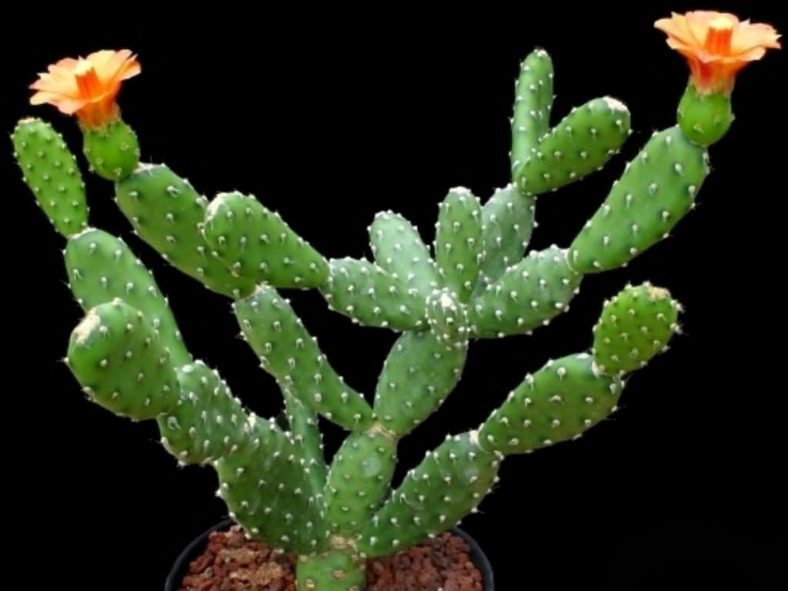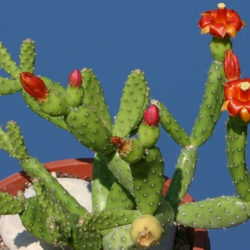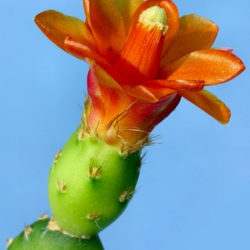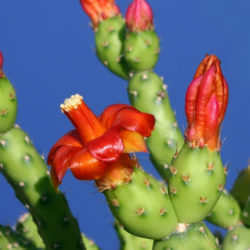Scientific Name
Tacinga subcylindrica (M.Machado & N.P.Taylor) M.Machado & N.P.Taylor
Synonym(s)
Tacinga inamoena subsp. subcylindrica
Scientific Classification
Family: Cactaceae
Subfamily: Opuntioideae
Tribe: Opuntieae
Genus: Tacinga
Description
Tacinga subcylindrica, also known as Tacinga inamoena subsp. subcylindrica, is a shrubby cactus with segment, irregularly branched stems with areoles that are unarmed or bear only a few glochids. It can grow up to 14 inches (35 cm) tall. The stem segments can reach up to 2.8 inches (7 cm) in length and 1.2 inches (3 cm) in diameter.
The attractive flowers are bright orange to reddish-orange with green pericarpel, measuring up to 1.6 inches (4 cm) long and 1.2 inches (3 cm) in diameter. They are followed by spherical fruits ranging from yellow and orange to red, containing yellowish pulp and numerous tiny brown seeds. The fruits are up to 1 inch (2.5 cm) in diameter.
Tacinga subcylindrica is related to and was previously considered a subspecies of Tacinga inamoena. However, it is much smaller than Tacinga inamoena, has smaller stem segments, and is geographically isolated.
Origin
Tacinga subcylindrica is native to northeast Brazil. It grows on exposed gneissic rock outcrops in Bahia, Pernambuco, Ceará, Paraíba, and Rio Grande do Norte.

Hardiness
USDA hardiness zone 10b to 11b: from 35 °F (+1.7 °C) to 50 °F (+10 °C).
How to Grow and Care
Though the large variety of species within the Opuntia genus means different types of prickly pears may need slightly different care, all are desert cacti that need lots of sun, lots of light, and very little water. If you live in a hot, arid area – particularly the American Southwest – these plants can generally be planted outside, left alone, and enjoyed. Though Opuntia will grow just fine in a garden, they can also be grown in pots.
Though Opuntia will grow just fine in a garden, they can also be grown in pots. To repot, ensure the soil is dry, remove the pot, and remove the old soil. After treating any cuts with fungicide, place the prickly pear in a new pot and backfill it with potting soil. As with a new cutting, ensure not to water a newly repotting Prickly Pear briefly to avoid rotting its roots.
See more at How to Grow and Care for Opuntia.
Links
- Back to genus Tacinga
- Succupedia: Browse succulents by Scientific Name, Common Name, Genus, Family, USDA Hardiness Zone, Origin, or cacti by Genus
Photo Gallery
Click on a photo to see a larger version.


